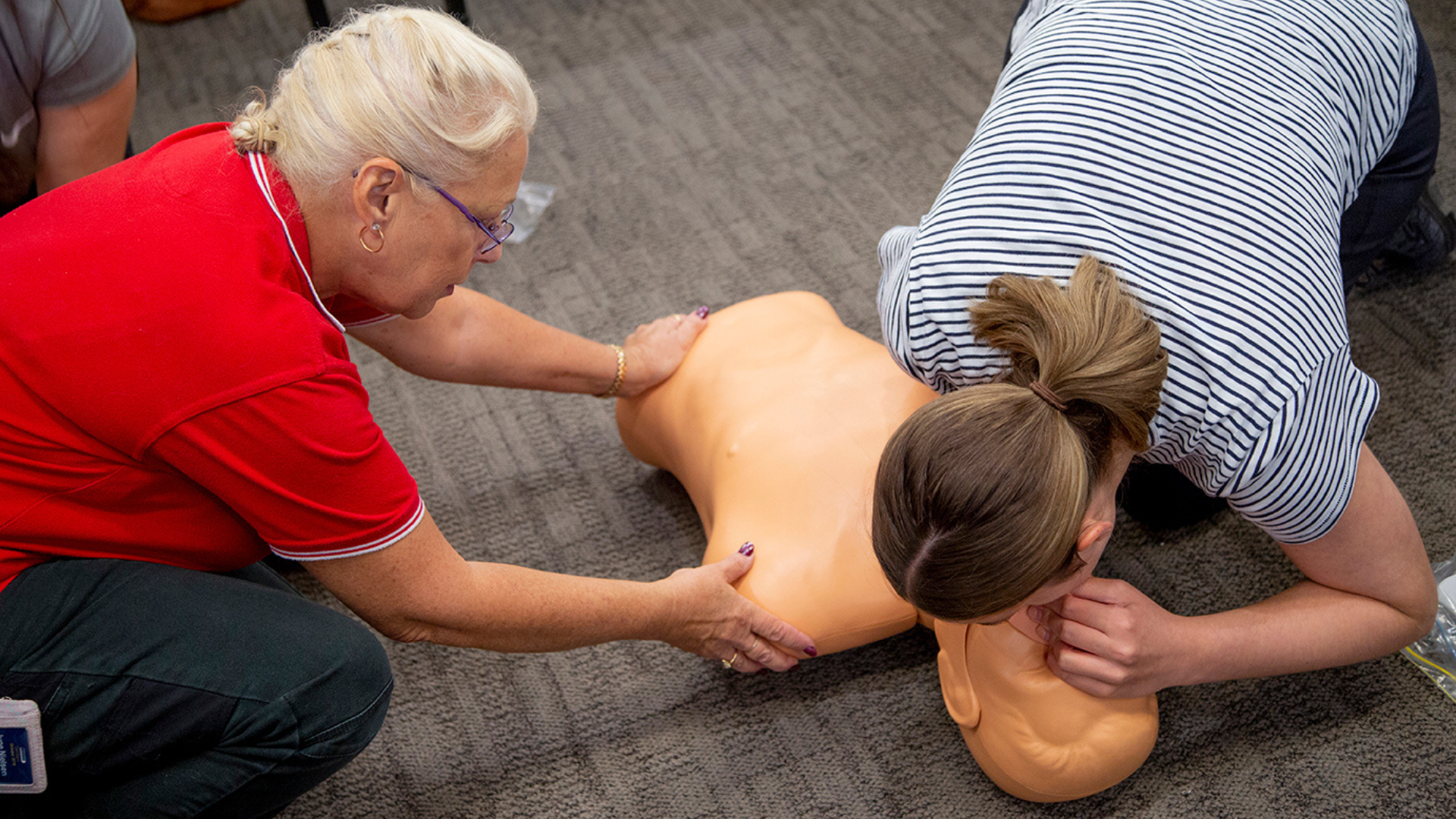Introduction
In our fast-paced world, emergencies can strike without caution. Whether it's a small injury, a clinical emergency, or a dangerous circumstance, recognizing how to offer emergency treatment can make all the difference. This is where a First Aid course enters play. Many individuals may wonder what they can get from such training, and this article intends to shed light on that.
By enrolling in a First Aid and mouth-to-mouth resuscitation course, you don't simply discover wrapping wounds or carrying out CPR; you outfit yourself with vital skills that could conserve lives. So, just what will you discover in an extensive training course? Let's CPR workshops in Canberra study the details.

First Aid Essentials: What You'll Learn in a Thorough Course
Understanding Initial Aid
What is Initial Aid?
First help describes the initial aid provided to a person suffering from an injury or illness until specialist clinical help arrives. It incorporates different methods and skills varying from simple injury care to lifesaving strategies like mouth-to-mouth resuscitation (Cardiopulmonary Resuscitation).
Importance of Emergency treatment Training
Why Needs to You Take an Emergency Treatment Course?
Taking a First Aid course is necessary for several reasons:
- Confidence: Recognizing just how to react in emergency situations can infuse confidence. Life-Saving Skills: The capability to carry out CPR or aid with choking can save lives. Career Advancement: Many careers call for certification in first aid. Community Obligation: Being trained ways you can aid others effectively.
Overview of CPR
What is CPR?
CPR, or Cardiopulmonary Resuscitation, is an emergency situation procedure executed when somebody's heartbeat or breathing has quit. It combines breast compressions with rescue breaths to maintain blood circulation and oxygenation until expert help arrives.
The Framework of a Comprehensive First Aid Course
What Does an Emergency treatment Course Include?
A well-rounded First Aid and mouth-to-mouth resuscitation course usually covers the complying with subjects:
Introduction to First Aid Legal and Ethical Considerations Scene Safety Basic Life Support (BLS) CPR Techniques Choking Relief Wound Care Management Burn Treatment Managing Shock Recognizing Medical Emergencies Using an Automated External Defibrillator (AED)Legal Aspects of First Aid
Are There Legal Effects Associated With Giving First Aid?
Yes, supplying first aid does lug legal responsibilities known as "Do-gooder laws." These legislations protect individuals that help others in emergency situations, supplied their actions are reasonable and not reckless.
Scene Safety and security: The First Step
How Do You Ensure Scene Safety?
Ensuring scene safety and security involves evaluating the atmosphere prior to coming close to the target:
- Look for prospective threats (website traffic, fire). Make sure it's secure for both you and the victim.
Basic Life Support (BLS)
What Function Does BLS Play in Emergency Situation Situations?
Basic Life Assistance includes the fundamentals of preserving life features till further medical help gets here. This section covers vital skills such as:
- Checking responsiveness Activating emergency services Performing top notch upper body compressions
Advanced CPR Techniques
What Are Advanced Techniques Covered in Mouth-to-mouth Resuscitation Courses?

Advanced strategies might include:
- Two-rescuer CPR Use of obstacle gadgets for rescue breaths Special considerations for babies and children
Choking Relief Techniques
How Do You Help A Person That is Choking?
Choking alleviation entails two essential techniques:
The Heimlich maneuver for adults. Back blows and breast drives for infants.Wound Care Management
How Do You Effectively Handle Wounds?
Effective wound administration entails:

- Cleaning the injury with saline or tidy water. Applying antibiotic ointment. Covering it with sterilized dressings.
Burn Treatment
What Are Effective Techniques for Dealing With Burns?
Burn therapy varies by degree:
Cool the melt under running water. Cover it with non-stick dressings. Seek medical focus for extreme cases.Managing Shock
How Is Shock Recognized and Treated?
Recognizing shock consists of searching for signs and symptoms like pale skin, fast pulse, or complication:
Lay the individual down. Elevate their legs unless there are injuries avoiding this. Keep them relax till assistance arrives.
Recognizing Clinical Emergencies
What Types of Medical Emergencies Must You Understand Of?
Common medical emergencies consist of:
- Heart assaults Stroke Severe allergic reactions Recognizing these conditions aids you act quickly.
Using an Automated External Defibrillator (AED)
How Do You Make use of an AED Correctly?
Using an AED involves turning it on, connecting pads according to images on the tool, and complying with voice prompts carefully.
Importance of Continual Learning
Why Is Continual Learning Important in Emergency Treatment Training?
Continuous learning ensures you remain updated on best techniques and new procedures in first aid care.
FAQs Concerning First Aid Courses
What Is Consisted of in a Criterion Emergency Treatment Course?- A conventional training course generally covers fundamental life assistance, injury monitoring, choking relief methods, and lawful considerations.
- Most programs range from 6 hours to 16 hours depending on the depth of material covered.
- Yes, upon successful completion of most programs, participants receive a first aid certificate, which is typically valid for two years.
- Yes! Numerous organizations offer online programs that provide adaptable understanding settings while still being effective.
- Absolutely! Hands-on practice is important for understanding abilities like chest compressions and utilizing AEDs effectively.
- Generally, there are no age constraints; nevertheless, individuals need to be psychologically competent to learn these life-saving abilities effectively.
Conclusion
Enrolling in an extensive emergency treatment course furnishes individuals with essential expertise that can conserve lives during emergency situations-- whether in the house, work, or out in public areas! From comprehending basic life support treatments such as mouth-to-mouth resuscitation to discovering how to manage injuries correctly or recognize indicators of shock-- these courses give important training that any person can profit from!
As we navigate via our lives loaded with changability-- what far better method than preparing ourselves with understanding acquired from structured training sessions focused on conserving lives?
In verdict-- if you're contemplating using up any type of kind of first-aid training-- never ever think twice! Equip yourself today with these effective devices because preparedness absolutely makes all the difference when every second counts!